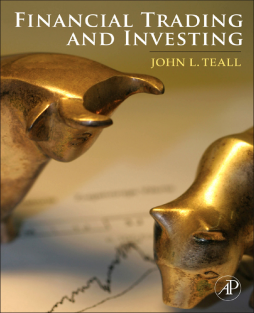
Additional Information
Book Details
Abstract
A former member of the American Stock Exchange introduces trading and financial markets to upper-division undergraduates and graduate students who are planning to work in the finance industry. Unlike standard investment texts that cover trading as one of many subjects, Financial Trading and Investing gives primary attention to trading, trading institutions, markets, and the institutions that facilitate and regulate trading activities—what economists call "market microstructure." The text will be accompanied by a website that can be used in conjunction with TraderEx, Markit, StocklinkU, Virtual Trade, Vecon Lab Experiment, Tradingsim, IB Student Trading Lab, Brenexa, Stock Trak and How the Market Works.
- Introduces the financial markets and the quantitative tools used in them so students learn how the markets operate and gain experience with their principal tools
- Helps students develop their skills with the most popular trading simulation programs so they can reuse the book to solve day-to-day problems
- Stretches from investor behavior to hedging strategies and noise trading, capturing recent advances in an up-to-date reference source
"Teall’s Financial Trading and Investing presents clear and up-to-date coverage of trading and market microstructure. Arbitrage and hedging examples in currency, forwards, fixed income and options markets are well developed, with particular attention devoted to implementing transactions."--Ahmet K. Karagozoglu, Hofstra University
"I enjoyed reading the material in Financial Trading and Investing. Dr. Teall’s coverage of the content in this text is very thorough, and it fills a niche in academic and professional literature on trading and market microstructure."--Travis Jones, Florida Gulf Coast University
"The presentation is well supported not only by the extensive use of professional literature but also by examples in each chapter. The end-of-chapter questions enhance learning by enabling students to apply concepts in meaningful ways. They make the material more ‘real world' for advanced undergraduates or graduate students."
--Kevin Klein, Illinois College
